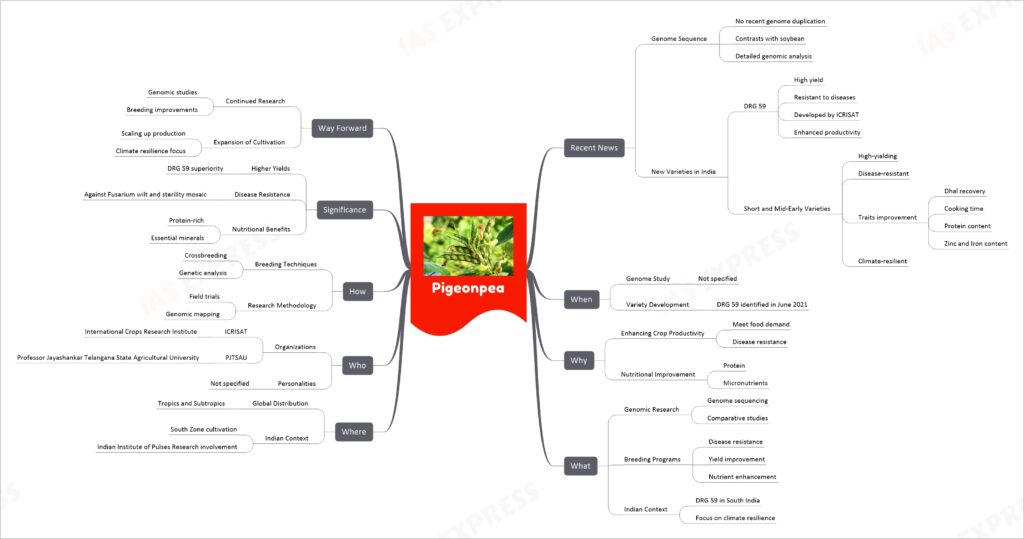Pigeonpea

Pigeonpea, also known as Cajanus cajan, is an important legume crop, particularly in tropical and subtropical regions. Originating in India and widely cultivated in Africa, pigeonpea is a nutritious and protein-rich food source. The crop is a perennial woody shrub but is mostly grown as an annual for its seeds. It is classified into varieties based on maturity and floral characteristics, with different types suited to varying climatic and soil conditions. Pigeonpea cultivation involves specific practices such as intercropping, appropriate seed rate and spacing, and tailored fertilizer application. Harvesting generally occurs from January to February, followed by specific threshing, drying, and storage techniques. Pigeonpea plays a significant role in subsistence agriculture, providing essential nutrition and economic benefits, especially for resource-poor farmers.
If you like this post, please share your feedback in the comments section below so that we will upload more posts like this.

